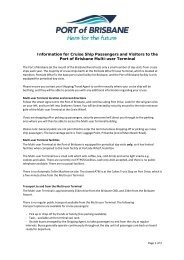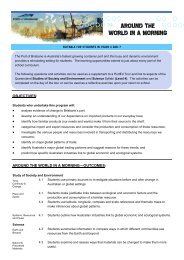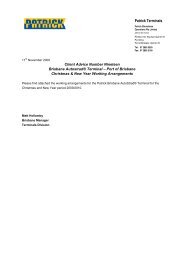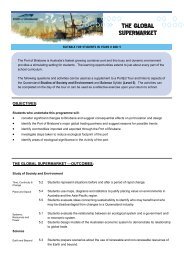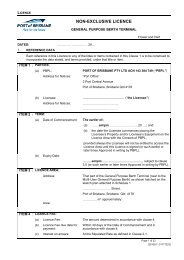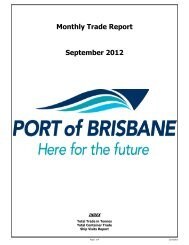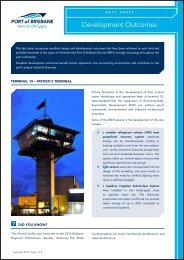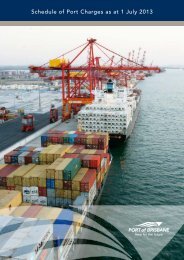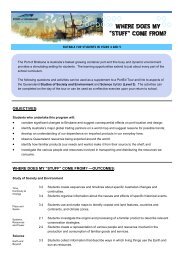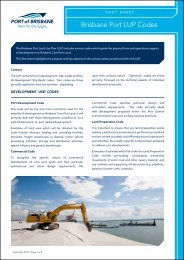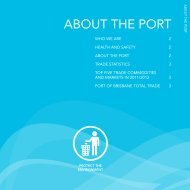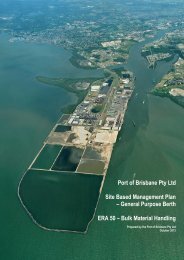FACilities
Section 3: Facilities - Port of Brisbane
Section 3: Facilities - Port of Brisbane
- No tags were found...
You also want an ePaper? Increase the reach of your titles
YUMPU automatically turns print PDFs into web optimized ePapers that Google loves.
Dry-Bulk Terminals<br />
The port’s dry-bulk facilities have flexible operational arrangements, with some fully dedicated to a particular user<br />
and others sharing wharf facilities with non-bulk trades.<br />
Port of Brisbane<br />
Name of terminal<br />
Coal Terminal<br />
Grain/Cottonseed/Sugar Terminal<br />
Cement/clinker plant<br />
Woodchips Terminal<br />
General Purpose Berth<br />
Owner or user<br />
Queensland Bulk Handling Pty Ltd<br />
GrainCorp<br />
Sunstate Cement Ltd<br />
Queensland Commodity Exports Pty Ltd<br />
Port of Brisbane Pty Ltd<br />
Upriver<br />
Name of terminal<br />
Pinkenba Bulk Terminal<br />
Common-user Berth<br />
Pinkenba and Gibson Island<br />
Fertiliser/Chemical Plant<br />
Queensland Bulk Terminal<br />
Hamilton wharves<br />
Owner or user<br />
GrainCorp<br />
Port of Brisbane Pty Ltd<br />
Incitec Pivot<br />
Wilmar Gavilon<br />
QUBE Logistics<br />
*Over the next few years these facilities will be progressively relocated. Most wet-bulk facilities at the port are either crude-oil<br />
or refined-product berths.<br />
Wet-Bulk<br />
Brisbane has two oil refineries – Caltex at Lytton and BP at Bulwer Island – each with a crude-oil berth used principally<br />
for imports and a products berth used for refined exports. Shell (Pinkenba) and Neumann Petroleum Terminals (Eagle<br />
Farm) also handle refined products through the port at wharves in the Pinkenba Reach.<br />
Animal and vegetable oils and chemicals are moved through terminals at Pinkenba and Hamilton.<br />
Shipping Handbook 2013/14 | 11




